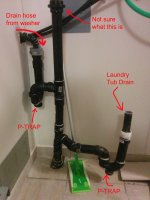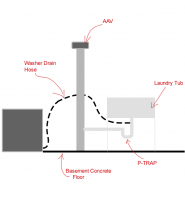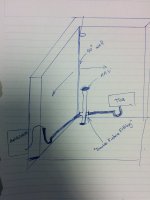Hi All,
We recently purchased a home (first home) and settled in comfortably. Everything has been great with the exception of the Laundry room/drain.
Every time the washing machine goes into the drain cycle we can smell a terrible musky, eggy, gross odour. The smell lasts for about 15-20 second and quickly fades away.
I thought it was coming from the laundry tub, but it doesn't seem so.
I removed the laundry tub and took a picture for reference.
No other sink, toilet or drain smells musky/eggy.
Attached is a picture of what seems to be a butcher job.
We recently purchased a home (first home) and settled in comfortably. Everything has been great with the exception of the Laundry room/drain.
Every time the washing machine goes into the drain cycle we can smell a terrible musky, eggy, gross odour. The smell lasts for about 15-20 second and quickly fades away.
I thought it was coming from the laundry tub, but it doesn't seem so.
I removed the laundry tub and took a picture for reference.
No other sink, toilet or drain smells musky/eggy.
Attached is a picture of what seems to be a butcher job.



